As homeowners in California know, choosing the right roof type and style is essential for protecting your home from the harsh climate and ensuring its longevity. Every homeowner has unique needs and preferences, which is why we offer a range of roofing solutions that cater to different styles, budgets, and climate conditions.
Therefore, we will discuss what type of roof is best in California to have a better understanding of the roofing options available to you and be better equipped to make an informed decision.
Popular California Roof Styles
California is home to a diverse range of architectural styles, and each style demands a different type of roof to complement it. Here are some of the most popular California roof styles:
Spanish Tile Roof:
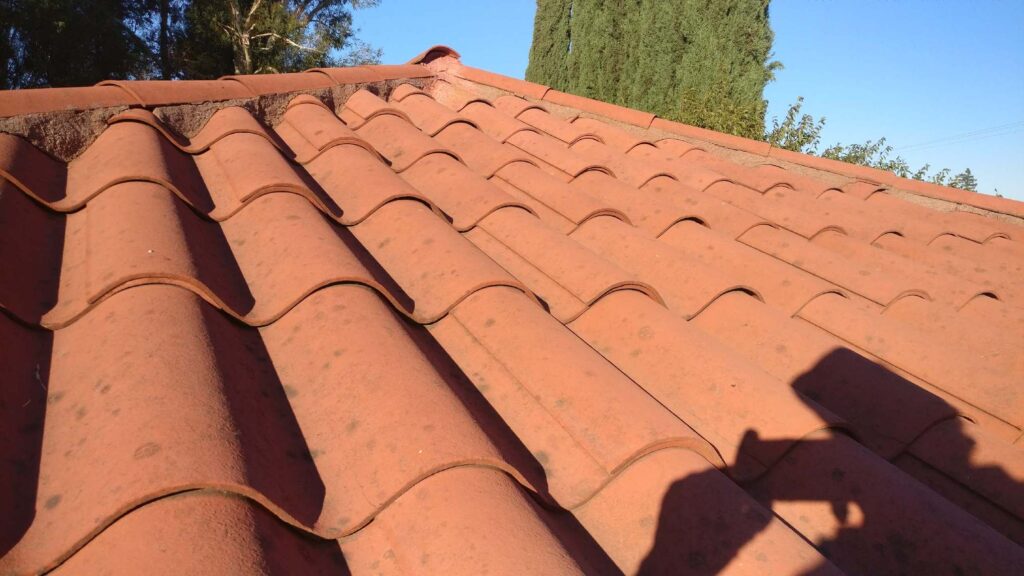
The Spanish tile roof is a classic California style, characterized by its curved, clay tiles. This style is popular for its durability and aesthetic appeal. Spanish tile roofs can withstand high winds, heat, and rain, making them perfect for California’s weather conditions.
Craftsman Style Roof:
The craftsman-style roof is another popular choice in California. It features a low-pitched roof with exposed rafters and decorative brackets. This style is known for its simplicity and practicality, making it an excellent choice for homes that emphasize functionality over style.
Flat Roof:
These roofs are becoming increasingly popular in California, especially for modern-style homes. Flat roofs provide a sleek, minimalist look and are easy to maintain. However, they are not suitable for areas that receive heavy rainfall or snow, as they do not have a natural slope for drainage.
Mediterranean Roof:
The Mediterranean roof is another classic California style, characterized by its red clay tiles and low-pitched roof. This style is perfect for homeowners who want to add a touch of elegance to their homes. Mediterranean roofs are durable and can withstand high winds and heat.
Longest-Lasting Roofing Material
When it comes to roofing materials, durability is a crucial factor to consider. California’s climate can be harsh, with high winds, heavy rains, and intense sun exposure. The right roofing material can make a significant difference in the longevity of your roof.
Imagine not having to worry about roof repairs or replacement for decades to come, and instead, spending that time and money on things you love, like traveling or pursuing a hobby. Choosing the right roofing material can make that dream a reality.
Here are some of the longest-lasting roofing materials available:
Metal Roofing
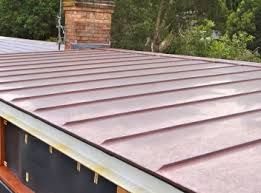
Metal roofing is a popular choice for its durability and longevity. Metal roofs can last up to 50 years or more, making them a cost-effective option in the long run. They are resistant to high winds, fire, and hail, and they require minimal maintenance.
Clay Tile Roofing
The use of clay roof tiles is a time-honored tradition in the Golden State. They are one of the most durable roofing options, and have a lifespan of up to 100 years.
They are resistant to fire, insects, and rot, and they require minimal maintenance.
Slate Roofing
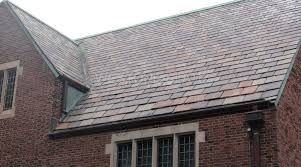
This is a high-end roofing material that has been used for centuries due to its beauty and resilience. Since slate roofs can survive for a century or more without needing replacement, they are a worthwhile investment.
They are resistant to fire, hail, and high winds, and they require minimal maintenance.
Best Roof for High Winds
California can experience strong winds at times, especially during fire season. Choosing the right roofing material can make all the difference in protecting your home from wind damage. Here are some of the best roofing materials for high winds:
Metal Roofing
Metal roofing is one of the best materials for high winds, as it can withstand gusts of up to 140 miles per hour. The interlocking panels create a secure seal, and the lightweight nature of metal helps reduce the risk of roof uplift during high winds.
There are several types of metal roofing materials available, including steel, aluminum, copper, and zinc. Generally, metal roofing is known for its high wind resistance, with some types of metal roofing materials being able to withstand gusts of up to 140 miles per hour. The interlocking panels of metal roofing create a secure seal, and the lightweight nature of metal helps reduce the risk of roof uplift during high winds.
Standing seam metal roofing consists of interlocking panels that are raised above the roof deck and fastened with concealed clips or screws. The panels are connected vertically by a raised seam, which creates a tight seal against wind-driven rain and prevents uplift during high winds. The raised seam design also helps prevent water from pooling on the roof, reducing the risk of leaks and water damage.
In addition to the raised seam design, standing seam metal roofing is also typically installed with a continuous panel system, meaning the panels run continuously from the eave to the ridge without any horizontal seams. This further enhances the roof’s wind resistance by minimizing the number of potential points of failure.
Asphalt Shingles
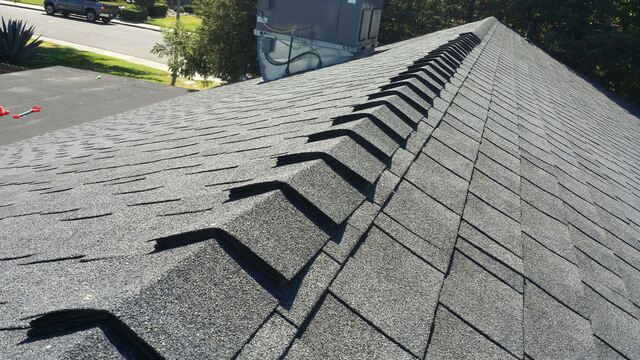
Due to their low cost and long lifespan, asphalt shingles are frequently used as a roofing material. They are available in two main types:
- Three-tab shingles are thinner and lighter than architectural shingles, and therefore, less wind resistant.
- Architectural shingles, on the other hand, are thicker and heavier, making them more resistant to high winds.
The wind resistance of asphalt shingles can vary depending on the specific product and how it is installed, but generally, they can withstand winds of up to 130 miles per hour when installed correctly.
Tile Roofing
There are several options for roof tiles, including clay, concrete, and even slate. In comparison to other roofing materials, tiles can withstand strong winds for longer because of their weight and durability.
The interlocking tiles and the weight of the material help keep the roof in place during high winds. Concrete and clay tiles can typically withstand winds of up to 125 miles per hour, while slate tiles can withstand winds of up to 150 miles per hour.
The Best Roof for Hot Climates
Living in a hot climate like California, it’s essential to choose a roofing material that can withstand the harsh sun and heat while keeping your home cool and comfortable. Here are some of the best roofing materials for hot climates:
Clay or Concrete Tiles
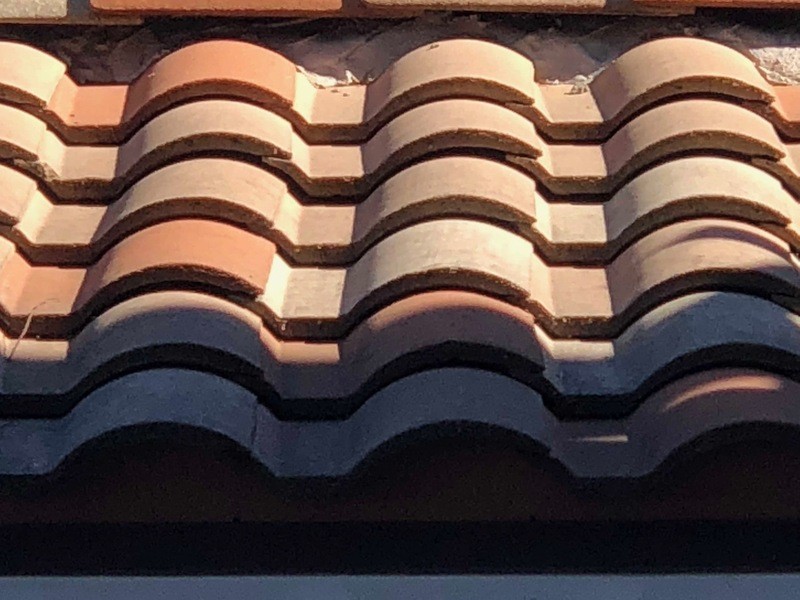
In hotter areas, tiles made of clay or concrete are preferable because of their capacity to deflect solar radiation and internal heat. The tiles have a natural air gap between the roof deck and the tile itself, which helps to keep the roof deck and the attic space below cool. They are also fire-resistant, durable, and long-lasting.
Metal Roofing
Metal roofing is another excellent option for hot climates. Similar to clay and concrete tiles, metal roofing reflects sunlight and heat away from the home, helping to keep the interior cool. Metal roofing is also very durable and can last for decades with proper maintenance. Additionally, some types of metal roofing, like steel, are fire-resistant.
Cool Roofs
Reflecting the sun’s rays and lowering the indoor temperature, cool roofs are a great method to save money on energy bills. Cool roofs are available in a variety of materials, including asphalt shingles, metal roofing, and tile roofing. These roofs are typically light in color and have a reflective surface to help reflect sunlight away from the home.
The Most Durable Type of Roof
When it comes to choosing the most durable type of roof, several factors need to be considered, including the material’s lifespan, resistance to weather and other external factors, and ease of maintenance. Here are some of the most durable roofing materials:
Metal Roofing
One of the longest lasting options is metal roofing. Metal roofs also have a long lifespan and require minimal maintenance.
It is lightweight compared to other materials, making it easy to install and less likely to cause structural damage. Metal roofs are also resistant to damage from UV rays, wind, and fire, making them an excellent choice for areas with harsh weather conditions.
Slate
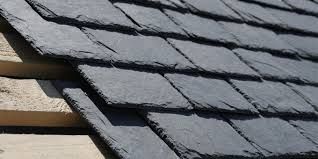
The use of slate, a naturally occurring stone, as a roofing material dates back centuries. It has excellent durability and can last up to 100 years or more with proper maintenance.
It is heavy, however, and requires a sturdy roofing structure to support its weight. Once installed, slate is resistant to UV rays, fire, and wind, making it an excellent choice for areas prone to severe weather conditions.
Clay or Concrete Tiles
These tiles are both durable roofing materials that are resistant to damage from weather, high winds, hail, fire, and UV rays.
However, they are heavy, and like slate, require a sturdy roofing structure to support their weight. Once installed, clay and concrete tiles can last for decades with minimal maintenance.
Asphalt Shingles
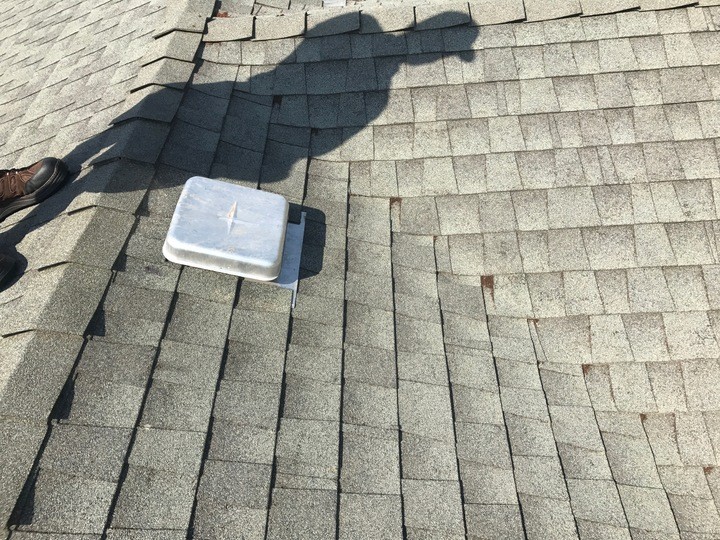
They are a popular roofing material due to their affordability and durability. Since they are lightweight and easy to install, they are an excellent choice for homes with less sturdy roofing structures.
They are resistant to wind and fire and can last up to 30 years with proper maintenance. However, they are less durable than other materials and can be prone to damage from wind, hail, and UV rays.
Cheapest Type of Roofing
When it comes to roofing, cost is often a significant consideration for homeowners. While there are several roofing options available, some materials are less expensive than others. Here are some of the most affordable roofing materials in California, along with their approximate cost per square foot for materials and installation:
Asphalt Shingles
In California, asphalt shingles dominate the roofing market because of their low cost and low difficulty of installation. They range from $65 to $90 per square (100 square feet) and have a wide range of warranties. They are available in a wide range of colors and textures, from fiberglass to organic.
Composite Shingles
Composite shingles are a more expensive option than asphalt shingles, but they are still more affordable than other roofing materials. They cost around $4-$6 per square foot for materials and $6-$10 per square foot for materials and installation combined.
Metal Roofing
This option is more expensive , but it is still more affordable than other high-end roofing materials. Metal roofing costs around $5-$12 per square foot for materials and $7-$14 per square foot for materials and installation combined. While metal roofing can be more challenging to install, cleanup is relatively easy.
Clay or Concrete Tiles
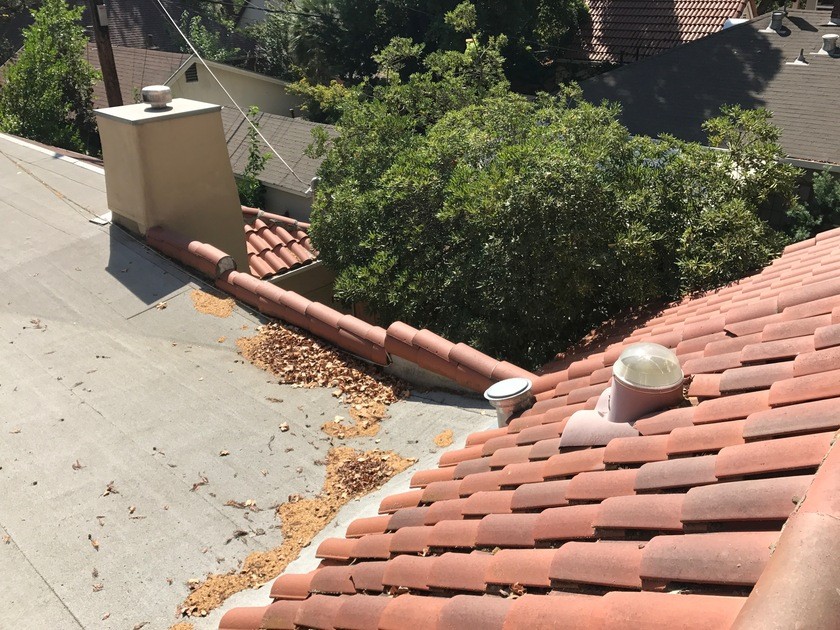
These tiles are among the most expensive roofing materials, costing around $10-$20 per square foot for materials and $15-$30 per square foot for materials and installation combined. They are also heavier and more challenging to install than other roofing materials, which can increase the overall cost of installation.
The key takeaway
Choosing the right roofing material for your home in California depends on a variety of factors, including price, climate, durability, wind resistance, and lifespan. Based on these factors, here are some recommended combinations for roof type and material:
- Price: For homeowners on a tight budget, asphalt shingles are the most affordable option. They are also easy to install and maintain, making them a popular choice for many homes.
- Hot Climate: In areas with high temperatures, it’s important to choose a roofing material that can withstand UV rays and heat. Clay or concrete tiles are a good option for hot climates, as they are heat-resistant and can help keep your home cooler.
- Durability: When it comes to durability, metal roofing is a top choice. It is resistant to damage from UV rays, wind, and moisture, and can last for 50 years or more.
- High Winds: For areas that experience high winds, a roofing material that is resistant to wind damage is crucial. Metal roofing and architectural shingles are good options, as they have high wind resistance and can withstand gusts up to 130 mph.
- Longest Lasting: If you want a roofing material that will last for several decades, clay or concrete tiles are the best option. They can last up to 100 years with proper maintenance and care, making them a wise investment for homeowners who plan to stay in their homes for a long time.
For each of these categories, the best roof type may vary depending on the shape and structure of your home. Gable roofs, which have a triangular shape and two sloping sides, are a popular choice for many homes. For gable roofs, the recommended roofing materials are:
- Price: Asphalt shingles or composite shingles
- Hot Climate: Clay or concrete tiles
- Durability: Metal roofing
- High Winds: Architectural shingles or metal roofing
- Longest Lasting: Clay or concrete tiles
Ultimately, the best roof type and material for your home will depend on a variety of factors, including your budget, the climate in your area, and the specific needs of your home. Consulting with a reputable roofing company can help you make an informed decision and ensure that your new roof meets your needs and exceeds your expectations.


